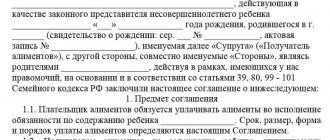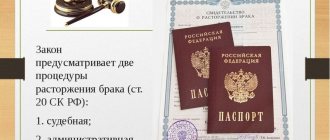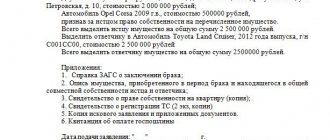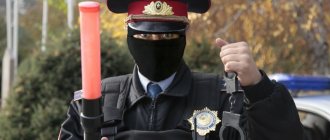The murder of two or more persons is considered a particularly serious crime, which is why this interpretation is used with caution in practice. Such an atrocity is qualified by Article 105 of the Criminal Code of the Russian Federation, clause “a”, part 2, adopted by the resolution of the Plenum of the Supreme Court of the Russian Federation “On judicial practice in murder cases” (clause 5).
This article will tell you in detail about the characteristic features of this crime, how direct intent differs from indirect intent, as well as how the motive is determined and what aggravating circumstances may be.
Characteristic signs
The main characteristic feature of the murder of two or more persons is the common criminal intention of the attacker. In this case, the crime can be committed either at the same time or over a short period of time. If the offenses did not have a single intent and were committed at different times, they are regarded as two murders independent of each other.
A single plan can be traced through the same motives for the crime in relation to different victims. In this case, it is necessary to distinguish between direct and indirect intent .
The first represents a conscious intention to take a person’s life with an understanding of the inevitability of death.
Indirect intent - the criminal assumes the likelihood of depriving the life of a person or group of people, without defining this as his goal, he simply allows such a scenario to develop (according to Article 25 of the Criminal Code of the Russian Federation).
In the case where the crime was committed at different times, the single intent can be exclusively direct . When the murder occurred at the same time, the intention may be:
- Directly with the deprivation of life of more than two people.
- Indirect, at least two people were killed.
- Direct, aimed at taking the life of one person and indirect in relation to other victims.
It is possible to qualify murder under Article 105 of the Criminal Code of the Russian Federation, paragraph “a”, part 2 only when its consequence is the simultaneous deprivation of life of two or more persons by one or different acts.
If a criminal planned to take the lives of several people, but in fact one of them was killed, while others were attacked for reasons beyond the control of the criminal, then the crime cannot be qualified as a crime (murder of two or more persons).
In this situation, what happened should be considered as simple or qualified murder in accordance with Art. 105 of the Criminal Code of the Russian Federation, parts 1, 2, and also in accordance with Art. 105, paragraph “a”, part 2 of the Criminal Code of the Russian Federation (upon the death of at least one person).
Problems of qualifying a crime
When qualifying a criminal act, difficulties often arise in which the circumstances of the case are not clear, and the unlawful act contains signs of another offense.
For example, causing death, which occurred with different intent, but even if there are small gaps in time, can be classified as a set of criminal actions, which entails liability under Part 1 of Article 105 of the Criminal Code.
Download for viewing and printing:
Article 105. Murder of the Criminal Code of the Russian Federation
Some criminals consider the murder of a pregnant woman as a murder of 2 persons. In fact, this is not the case; the Criminal Code provides for a separate provision in which there is liability for such a criminal act. The gestational age in this case does not matter.
In addition, when qualifying a crime, special attention is paid to the identity of the victims. If the deceased are civil servants or other persons who were in the performance of official duties, it is established that there are motives for committing such a crime related specifically to their professional activities.
Set of acts
A set of offenses is one of the types of multiplicity of atrocities : the commission of several crimes that, according to their qualification characteristics, belong to different articles (or parts thereof) of the Criminal Code of the Russian Federation (Article 17 of the Criminal Code). An important condition is the absence of a previous conviction for one of these acts. Exceptions may be:
- criminal actions related to the Special Part of the Criminal Code and involving more severe punishment (Part 1);
- one act in which signs of offenses specified in several articles of the Criminal Code are visible (Part 2).
If a set of crimes is established, the culprit is responsible for each of them under the relevant article. Characteristic features of the set of crimes:
- Committing several separate crimes. At the same time, there should be no single intent in the incidents, actions are aimed at different objects, and the objective side is different.
- Offenses can be homogeneous (related to one article of the Criminal Code of the Russian Federation) or heterogeneous (related to different articles of the Criminal Code).
- They differ in the stages of committing the offense.
- The defendant has not been convicted of any of the crimes previously. Moreover, the presence of a criminal record occurs immediately after the announcement of the court verdict (Resolution of the Plenum of the Supreme Court of the Russian Federation dated December 22, 2015 N 58). If the first sentence has not yet entered into force, the actions of the defendant may be considered based on the totality of crimes (Article 70 of the Criminal Code of the Russian Federation).
The murder of two or more persons can be considered as a combination of crimes if the intent to commit a crime arose at different times. If the actions of the attacker were committed at the same time and had a single intent behind them, then they should be classified as a single crime.
Corpus delicti
The subject of a crime in the deprivation of life of two or more persons (Article 105 of the Criminal Code of the Russian Federation, paragraph “a”) is an individual over fourteen years of age.
The subjective side of a crime lies in the presence of guilt in the form of intent (direct or indirect). This means that the criminal understands the threats that his actions will entail. The perpetrator consciously assumes the subsequent occurrence of death of certain persons, desires it, or is indifferent to the specified outcome of events and allows them.
The object of the crime provided for in Article 105 paragraph “a” of the Criminal Code of the Russian Federation is the interaction of persons that violates the right to life of certain people (Article 20 of the Constitution of the Russian Federation, International Covenant on Civil and Political Rights).
The object of the crime can be:
- generic - the interaction of persons in society, guaranteeing natural human rights enshrined in law; in this case – the right to life;
- species - social relations involving the protection of the right to life;
- direct – the right to life of a certain person.
Simply put, this is what is harmed - the life of a person (people).
The objective side of this issue is an illegal action or inaction that directly leads to the death of two, three or more people. A murder can be considered completed only when the actions of the accused are followed by the death of people.
Classification of murders
Offenses that resulted in the death of the victim under various circumstances are divided into types. The criminal code contains sections that take into account the factors of the crime committed. When passing a verdict, the courts consider each case separately, based on the Criminal Code classifier:
- Ordinary murders. These include fights, illegal acts of retaliation, as well as acts committed on domestic grounds and resulting in the death of the victim. The period of imprisonment varies from 6 to 15 years.
- Crimes with aggravating factors. Includes actions committed with cruelty and cynicism, by prior conspiracy, that pose a threat to the public. Preventive measure: 8-15 years of strict regime. Additional negative factors lead to life imprisonment.
- Privileged atrocities. They are carried out by mentally unbalanced subjects. This category also includes murders due to negligence that do not pose a threat to others. The punishment in such cases is up to 2 years in prison.
When passing a sentence, judges also take into account a number of circumstances:
| State of the culprit | |
| Emollient | Aggravating |
| Mental insolvency, awareness of guilt, sincere repentance. | Alcohol and drug intoxication, conspiracy with a group of persons, malicious intent. |
| Age | |
| 14 — 18 | 18 and over |
| Nature of the crime | |
| Negligence and lack of attention, for the purpose of self-defense, in the performance of official duties, during the arrest of an attacker. | Prepared in advance, spontaneous, group crime. |
| Assistance to the investigation | |
| Confession and repentance, willingness to bear punishment, assistance in finding evidence. | Fight during arrest, harm caused to representatives of the law. |
Difficulties in qualifying the incident under clause “A”, part 2 of art. 105 of the Criminal Code of the Russian Federation
The murder of two or more persons implies the presence of complex characteristic features of the crime, which complicates its qualification. The practical application of legal norms in this case has many contradictions and is sometimes unfair. For example, serial murders cannot be classified under Art. 105, paragraph “a”, part 2 of the Criminal Code of the Russian Federation, since the actions of the perpetrator have a large time interval, and there is also no single intent.
To correctly qualify this type of crime, specialists carry out an examination of the subjective side of the incident in order to clearly determine the sequence of actions of the offender, as well as his true intentions regarding the victims.
To establish the fact of the murder of several persons, corresponding to paragraph “a”, part 2 of Art. 105 of the Criminal Code of the Russian Federation, you need to find out:
- Was there a common intention to kill several people even before the incident?. This means that it is necessary to find evidence of the targeted killing of several persons by a perpetrator who was aware and desired such a result of his actions (or allowed it).
Important! The intent must arise before the first murder is committed. In order to establish the intention of the criminal, the motive for the crime is also considered. This factor does not influence the qualification of the crime.The key point is the goal - killing several people. If intentions towards each victim appear independently of each other, the actions are defined as deprivation of life in the aggregate (Part 1 of Article 105 of the Criminal Code of the Russian Federation) regardless of the time interval.
- Was the crime committed simultaneously or over a short period of time?.
Time frames are considered individually depending on the circumstances of the case. In practice, most often the interval between crimes should not exceed three to four hours.Determining the attribution of a criminal act becomes difficult when the circumstances of the case are not fully clarified, and the characteristic features of the offense under another part of the article are visible. In such a situation, attention should be paid to the main signs of murder.
Such a crime as the deprivation of life of a woman who is in a state of pregnancy (regardless of the period) is considered according to a separate norm - paragraph “d”, part 2, art. 105 of the Criminal Code of the Russian Federation. When qualifying, the following are also taken into account:
- the identity of the victims (for example, those in government service); whether the occupation became the cause of illegal actions;
the presence of a threat to public safety during the commission of a crime; if such occurs, the act is considered in conjunction with paragraph “e”, part 2 of Art. 105 of the Criminal Code of the Russian Federation – murder by a generally dangerous method.
If you are suspected of murdering two or more people
Any accused, even under such a serious charge, hopes for leniency and a mitigation of punishment, and such practice exists. In addition to the main mitigating circumstances, the judge may take into account exceptional circumstances, and the jury may render a verdict of leniency, which can significantly reduce the prison term. Being under our protection, you can be sure that none of these circumstances will be ignored. Call us, and we will do everything to ensure that the sentence is minimal, and if you are innocent, we will achieve dismissal of the case or acquittal.
| Providing defense in criminal cases: | Price |
| Visiting detainees in pre-trial detention centers (places of deprivation of liberty) for the purpose of giving legal advice: | from 20,000 rub. |
| Participation of a defense attorney in a court hearing under Art. 125 Code of Criminal Procedure of the Russian Federation: | from 30,000 rub. |
| Participation of a defense lawyer in a court hearing when choosing a preventive measure, extension of the period of detention: | from 30,000 rub. |
| Protection of the client during the investigation, preliminary investigation before sending the criminal case to court | from 50,000 rub. |
| Defense of the principal in the court of first instance, if the defense attorney participated in the preliminary investigation: | from 30,000 rub. |
| Defense of the client in the court of first instance, if the defense attorney did not participate in the preliminary investigation: | from 50,000 rub. |
| Appealing the verdict, ruling, decision of the court of first instance to the appellate instance: | from 70,000 rub. |
| Appeal and protest of a court verdict, rulings and decisions in the cassation instance: | from 50,000 rub. |
| Protection of the principal in court by way of supervision | from 30,000 rub. |
| Organization of examinations, consultations with the participation of specialists, experts in various fields of activity | from 15,000 rub. |
Ambiguity in the definition of motive
The motive of a crime is the reason that prompted the perpetrator to commit a criminal act aimed at achieving a specific goal (the murder of two or more persons).
The main problem in determining the motive for a murder is that it is not always possible to unambiguously establish the reasons for the crime. In addition, motivation in the process of committing illegal actions may undergo changes.
Another factor complicating the disclosure of the true reasons for the crime may be different motives united by one crime (for example, when several people are killed with a firearm). The motive acts as an independent characteristic of the subjective side of the offense, while qualifying one incident with different motives under paragraph “a”, part 2 of Art. 105 of the Criminal Code of the Russian Federation, one of them is not taken into account or is included in the murder to which it is not related.
The intent in a crime for the same motive may differ. So, one person can be killed by direct intent, the second - by indirect intent. If several persons are deprived of life by different actions and for different reasons, the act cannot be considered as a single thing and is classified according to the totality of crimes.
Features of the unlawful act
In legislation, such an unlawful act is often called qualified, that is, it is a crime with aggravating circumstances.
A crime is considered committed only if a certain number of signs are present. In particular, the guilty person must have the intention to take the lives of several people at once, which can be expressed in various types of intent.
- Straight. The criminal immediately planned to commit the murder of several people.
- Direct and indirect at the same time. Such cases occur when the guilty person kills one person, after which, trying to “cover up” the traces of the crime, random witnesses to what happened.
- Indirect, when the criminal commits actions, realizing that people may die because of them.
Important!
To hold the guilty person accountable for committing such an illegal act, there must be a consequence in the form of the death of several people without a strong gap in time. It is precisely because of the presence of such complex characteristics that it is difficult for authorized persons to qualify such a criminal act. For example, serial murders, even those committed in the same way, cannot be qualified under Part 2 of Article 105 due to the large gap in time.
Responsibility
Federal Law No. 162-FZ of December 8, 2003, as amended. No. 73-FZ of July 21, 2004, as well as No. 377-FZ of December 27, 2009, provides for imprisonment from 8 to 20 years, restriction of freedom for up to 2 years, life imprisonment for murder with aggravating circumstances. Such crimes include the deprivation of life of two or more persons. In addition to the above, aggravated murder is:
- deprivation of life related to the professional activity of the victim;
- a minor, a helpless person, as well as murder with kidnapping;
- pregnant woman;
- particularly cruel acts;
- violating public safety;
- out of hostility to a social group (race, nationality, for political, ideological or religious reasons) or blood feud;
- committed by an organized criminal group;
- for selfish reasons, also associated with banditry;
- associated with hooliganism;
- to conceal other crimes, also related to sexual violence;
- to obtain donor organs.
If the murder of two or more persons is not accomplished for any reason, the incident is considered as an attempt. In this case, the maximum sentence is 15 years (in accordance with Article 66 of the Criminal Code of the Russian Federation). Life imprisonment does not apply in this situation.
If the offense has aggravating circumstances, mitigating circumstances may also be taken into account in the usual manner when considering it.
These are taken into account only when these facts characterize the personality of the perpetrator, and also affect the level of public danger of his actions.
Types of murder and punishments for them
Causing death by a mother to a newborn child. Such a crime is punishable by restriction of freedom for a term of 2 to 4 years, forced labor for up to 5 years and imprisonment for a term of up to 5 years. Despite the gravity of the crime, the state limits the term of punishment (Article 106 of the Criminal Code of the Russian Federation).
This is due to the possibility of depression, psychological postpartum trauma, and other mental disorders of the young mother. But if she took the life of her own child intentionally, fully aware of her act, her punishment increases.
Deprivation of life in a state of passion also applies to not particularly serious types of murder, but how many years are given for it depends on the circumstances and condition of the perpetrator. For such crimes, the court imposes punishment in the form of forced or correctional labor from 2 to 5 years, imprisonment for up to 5 years.
If a person killed his offender, who mocked him, insulted him, and forced him to commit illegal actions, this will be considered mitigating circumstances. In this case, the killer himself was a victim and took the life of another person in a state of passion. He could commit the same act against two or more people, and then he would be given a longer term of labor or prison (Article 107 of the Criminal Code of the Russian Federation).
If a person killed someone because he was defending himself and did not calculate his strength, the crime is classified as murder as a result of exceeding the limits of necessary self-defense. Despite the “unpremeditation” of the murder, the perpetrator faces correctional labor or imprisonment for up to 2 years (Article 108 of the Criminal Code of the Russian Federation).
Causing the death of a person who himself committed a crime and who needed to be detained is equated to the same type of crime. The perpetrator faces a similar punishment, only for up to 3 years. Such measures are due to the unplanned and “accidental” nature of the murder.
The lightest punishment for committing murder by negligence is forced labor, as well as restriction or imprisonment for up to 2 years. Causing death in such cases is usually associated with negligence in the performance of professional duties. Such a person is also prohibited from engaging in certain activities and working in leadership positions (Article 109 of the Criminal Code of the Russian Federation).
Contradictions in the classification of assassination attempts
The murder of two or more persons is considered as one criminal act and does not form a set of crimes. At the same time, in accordance with the changes in paragraph. 2 clause 5 of the Supreme Court Resolution No. 1 of January 27, 1999, the deprivation of life of one person and the unfinished murder of a second (attempt) cannot be attributed to the deprivation of life of two or more persons. In this situation, the offense should be considered, regardless of the intentions and timing of the act, as part 1, 2 of Art. 105, part 3 art. 30 of the Criminal Code of the Russian Federation.
The difficulty of qualification lies in the presence of contradictions. On the one hand, taking the lives of several people should be considered as one crime. On the other hand, when at least one murder attempt ends unsuccessfully, the event can be regarded as both one unfinished crime and as a set of such.
This contradiction can be resolved in one of two ways: either by recognizing the deprivation of life of one person and the attempt on the life of the second as an unfinished, ongoing offense, or by applying to such situations the interpretation of both multiple murder and aggregation of crimes.
The latter consideration of the issue presupposes double standards that are unacceptable in legislation from a position of fairness. The first option corresponds to the provisions of Part 1 of Article 17, Article 30, paragraph “a” of Part 2 of Art. 105 of the Criminal Code of the Russian Federation, but violates the procedure for independent examination of each illegal action (Part 1 of Article 17 of the Criminal Code of the Russian Federation).
The Supreme Court reclassified the actions of a person convicted of murder as exceeding the necessary defense
On October 22, the Judicial Collegium for Criminal Cases of the Supreme Court issued a cassation ruling in case No. 3-UD20-8-K6 of a citizen convicted of murder, reclassifying the act as exceeding the necessary defense and releasing him from prison due to the completion of his sentence.
The courts found that the convict killed one person and inflicted serious injuries on another
According to investigators, on December 13, 2015, Anton Gubenka, after drinking alcohol and due to personal hostility, inflicted multiple stab wounds on R., causing him to die at the scene of the crime. The man also stabbed P., who was trying to protect R., many times with a knife, causing this citizen serious harm to his health.
During the trial, the defense did not dispute the fact that the defendant caused the death of R. and serious harm to P.’s health, but insisted that such actions were committed in a state of necessary defense.
During the trial, the court of first instance established that the cause of the conflict between Anton Gubenka and R. was the latter’s attempt to steal the sewing machine of the accused’s mother: a verbal conflict between the men escalated into a fight, during which Gubenka used a knife. In turn, P. did not take part in the fight, but only tried to separate the fighters.
In June 2021, the Sarapulsky District Court of the Udmurt Republic sentenced Anton Gubenka to 8 years in prison for the murder of R. and for intentionally inflicting grievous bodily harm on P. (part 1 of article 105 and paragraph “h” of part 2 of article 111 Criminal Code of the Russian Federation). When imposing a punishment, the court took into account the nature and degree of public danger of the crime, the personality of the convicted person, mitigating circumstances: confession, active assistance in the investigation of crimes, partial admission of guilt, the health status of the defendant, the presence of a young child, and the absence of aggravating circumstances.
Subsequently, the appeal changed the conviction, increasing the sentence to 10 years in prison. At the same time, the second instance took into account the young age of the defendant at the time he committed the crime and adjusted the descriptive and motivational part of the sentence in terms of qualifying bodily injury that caused serious harm to health on the basis of danger to life, as well as the illegality of the victim’s behavior, which became the reason for the crime. The Court of Appeal also slightly changed the description of the defendant’s criminal actions aimed at causing the death of R.
In turn, the cassation clarified the descriptive and motivational part of the conviction and the appeal ruling, mentioning the testimony of the hospital workers where Anton Gubenka was admitted after the stabbing, and specifying the city in which the crime was committed.
The Supreme Court agreed with the reclassification of the crime
Subsequently, the convict and his defense lawyer, lawyer of the Administration of the Republic of Udmurtia Oleg Korpachev, appealed the court decisions to the Supreme Court of the Russian Federation, demanding their cancellation and termination of the criminal case due to the absence of elements of crime in Anton Gubenka’s actions.
According to the applicants, the victims attempted to steal the property of the convict, which escalated into a robbery, and therefore the latter, being in a state of necessary self-defense, was forced to defend himself with a knife. They also believed that the testimony of the victim P. was contradictory and did not correspond to the actual circumstances of the case. According to the convictions of the appellate judges, the appellate court did not take into account the established set of mitigating circumstances and the absence of aggravating ones, which resulted in the non-application of the provisions of Art. 64 and 73 of the Criminal Code of the Russian Federation, as well as illegal enhancement of the imposed punishment.
After studying the materials of the case, the Judicial Collegium for Criminal Cases of the Armed Forces of the Russian Federation found that the lower court did not give a proper assessment in the descriptive and motivational part of the guilty verdict to all the examined evidence, both incriminating and exonerating the defendant.
As the Supreme Court explained, while rejecting the defense’s arguments that the defendant used a knife against R. to protect himself from his unlawful actions, the lower court did not take into account all the circumstances essential for the correct resolution of the criminal case. Thus, the court of first instance found that R. did not pose any real threat to the life of Gubenka and did not have weapons or objects that he could use as such; his anthropometric data also did not give reason to believe that the deceased could pose a real threat to the life of the defendant . Accordingly, due to the lack of any significant physical superiority over the opponent among the combatants, the conflict could end without serious consequences. “The question of the existence of a threat to Anton Gubenka’s health was not discussed by the court and was not properly assessed in the verdict,” the Supreme Court emphasized.
The highest court noted that Part 2 of Art. 37 of the Criminal Code of the Russian Federation provides for the possibility of protection from an attack that is not associated with violence dangerous to the life of the defender or another person or with an immediate threat of such violence. Such defense is lawful if it does not exceed the limits of necessary defense, i.e. intentional actions that are clearly inconsistent with the nature and danger of the attack. As follows from Resolution of the Plenum of the Armed Forces of the Russian Federation No. 19 of September 27, 2012 “On the application by courts of legislation on necessary defense and infliction of harm when detaining a person who has committed a crime,” an encroachment, protection from which is permissible within the limits established by the above norm, should be understood committing socially dangerous acts involving violence that is not dangerous to the life of the defender or another person (for example, beatings, causing minor or moderate harm to health, robbery committed with the use of violence that is not dangerous to life or health).
At the court hearing of the first instance, it was established that during the fight R. caused various bodily injuries to the accused, which was subsequently confirmed by the conclusion of a forensic expert. Consequently, during the fight, R.’s actions were more active in comparison with the actions of the convict. “He inflicted more blows and with considerable force on Anton Gubenka, causing moderate harm to his health in the form of fractures of four ribs and the head of the fibula and light harm in the form of bruises and abrasions in various parts of the body, which posed a real danger to Gubenka’s health. Under such circumstances, the court’s conclusion that R. did not have physical superiority, that his actions did not pose any danger to Anton Gubenka, that the latter had no reason to defend himself from the victim, cannot be considered justified,” the Supreme Court noted.
At the same time, the Court indicated that the convict inflicted at least 33 stabs with a knife in various parts of R.’s body, when the latter did not use violence against the convict. Accordingly, there was no need to inflict such a number of blows on the victim, the method of defense chosen by Gubenka clearly did not correspond to the nature and danger of the attack, he exceeded the limits of necessary defense, and therefore, by virtue of Part 2 of Art. 37 of the Criminal Code of the Russian Federation, his defense cannot be recognized as legitimate.
“The convicted person himself, during the preliminary investigation, during interrogations as a suspect on December 14, 2015, and as an accused on December 22, 2015, also explained that P. tried to separate him from R., to prevent him, and therefore he struck him with a knife on his body so that he would not interfere with him. Taking into account the fact that P. did not commit an attack dangerous to the life or health of Anton Gubenka, the actions of the person convicted of causing grievous harm to P.’s health on the basis of personal hostile relationships with the use of an object used as a weapon were correctly qualified by the court under paragraph “h” ” part 2 art. 111 of the Criminal Code of the Russian Federation,” concluded the Supreme Court.
He added that the appeal, while increasing the defendant's punishment, did not indicate the reasons for the decision. The second instance referred to the same circumstances as the court of first instance, additionally pointing to his young age at the time of the crime. There are no other reasons for the need to impose a more severe punishment on a citizen, or any specific data to substantiate this decision in the appeal ruling.
Thus, the Supreme Court changed the judicial acts of the lower authorities, reclassifying the actions of the accused from Part 1 of Art. 105 at station 108 of the Criminal Code of the Russian Federation. As a result, the Supreme Court imposed a final sentence on Anton Gubenka of 3 years and 10 months in prison. Due to the fact that the man has served his sentence, he is subject to release from the correctional facility.
The editors of AG contacted lawyer Oleg Korpachev, but he refrained from providing comments on the criminal case.
AG experts commented on the Supreme Court's findings
Lawyer of the Administration of the Sverdlovsk Region Sergei Kolosovsky noted that, contrary to popular belief, the normative institution of necessary defense is quite often correctly applied by the courts. “And the determining factor here, also contrary to popular belief, is the position of the defense. If the defense is initially built taking into account the provisions of Art. 37 of the Criminal Code and taking into account these provisions the testimony of the accused is formed, then if there are objective prerequisites, the natural result is either a very lenient or acquittal sentence. From the cassation ruling of the Supreme Court it is clear that the defense attorney correctly pointed out the circumstances indicating the presence of signs of necessary defense in the actions of the convicted person, and the court heard the defense,” he believes.
According to the expert, among the important points in the definition, it is necessary to pay attention to the fact that the court applied not part 1, but precisely part 2 of Art. 37 of the Criminal Code. “Unfortunately, one of the common mistakes in applying the institution of necessary defense is the misconception that necessary defense is possible only when protecting a person from an attack that threatens his life. In reality, the right of a person to the necessary defense arises both when protecting the person, and even when protecting third parties from less dangerous attacks, which is what took place in the situation under consideration,” the lawyer emphasized.
Sergei Kolosovsky added that the Supreme Court correctly assessed the excessive number of blows and their location (in the back) precisely as an excess of the limits of necessary defense, and not as a sign of a more serious crime, which the lower courts did. “Taking into account all of the above, the cassation ruling of the RF Armed Forces can be considered as an example of the standard application of Art. 37 of the Criminal Code. And as such, it is certainly capable of having a positive impact on law enforcement practice in those difficult situations when the future accused was defending himself from an attack that did not pose a clear threat to his life,” the expert concluded.
Lawyer, head of family practice at the Moscow Bar Association No. 5 Tatyana Sustina called the cassation ruling of the Supreme Court de jure absolutely logical. “De facto, such a judicial act is an exceptional case that cannot fail to attract the attention of the professional community. The injuries inflicted on the victim by the defendant and ignored by lower courts could not escape the attention of the Supreme Court, and this gives hope to many defendants (including victims of domestic violence) that the situation in similar cases can improve,” she believes.
The expert noted that, having come to the conclusion that there was no corpus delicti under Art. 105 of the Criminal Code of the Russian Federation, the Supreme Court emphasized the severity of the damage caused, i.e. on a real threat to the life of the defendant. “Thus, we can conclude that the practice of cases of necessary defense or exceeding its limits will in any case be quite complex and different, and the border between necessary defense and exceeding its limits will remain blurred,” summed up Tatyana Sustina.





